Despite weak demand and falling conversion fees, 2023 has been busy with M&A-related announcements in the European flat-rolled market. We analysed completed deals to conclude that M&A transactions completed in 2023 did not lead to significant market consolidation in Europe.
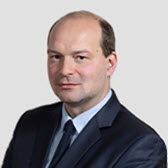
Author Alexey Pavlov
Senior Analyst, Aluminium View profile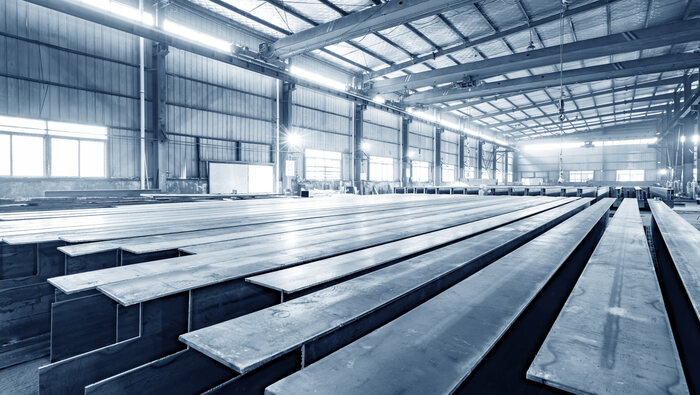
Deals mostly represent a shift in ownership from private equity groups to international industrial players entering the European market or vertical integration. We analysed detailed production data from the CRU Aluminium Cost Model for European-based mills and calculated the Herfindahl-Hirschman Index, used to determine market competitiveness pre-and post-M&A, to conclude that the combined FRP market can be considered competitive. However, both can stock and ABS market segments are more concentrated, while the plate market is moderately concentrated. This limits the potential for consolidation in those segments. However, we also believe that M&A combinations on an operator level are still feasible based on the other segments' market structure in Europe.
Despite challenging market conditions M&A activity is high in the European semis market
2023 is a challenging year for European flat-rolled producers (FRP). CRU now forecasts a significant decline in 2023 FRP demand, while transport is the only sector to grow y/y in 2023 (see more here). Considering conversion fees, we believe that the European FRP market experienced one of the worst six months in the past 20 years. Conversion fees for common sheet alloys lost 13–16% of their value by July compared to the level observed in January 2023. In August and September, the negative trend continued, bringing a decline in 1050 and 5754 conversion fees to -17% and -19% YTD, respectively. Additionally, German FRP production is down 10.6% y/y in 2023 Q2 and down 9% y/y in 2023 H1.
However, despite weak demand and falling conversion fees, 2023 was busy with the FRP M&A-related announcements in Europe. To start with, Speira confirmed the successful completion of the Real Alloy Europe acquisition and then Atlas Holdings announced the sale of Aludium to Jupiter Aluminium Corporation (JAC). Additionally, Quantum Capital Partners completed the sale of Slim Aluminium to Dingsheng Group, China. Finally, in August Arconic and Apollo announced that Apollo Funds had completed the previously announced acquisition. This is a global deal, but still relevant for the European FRP market. We summarise completed transactions in the table below.
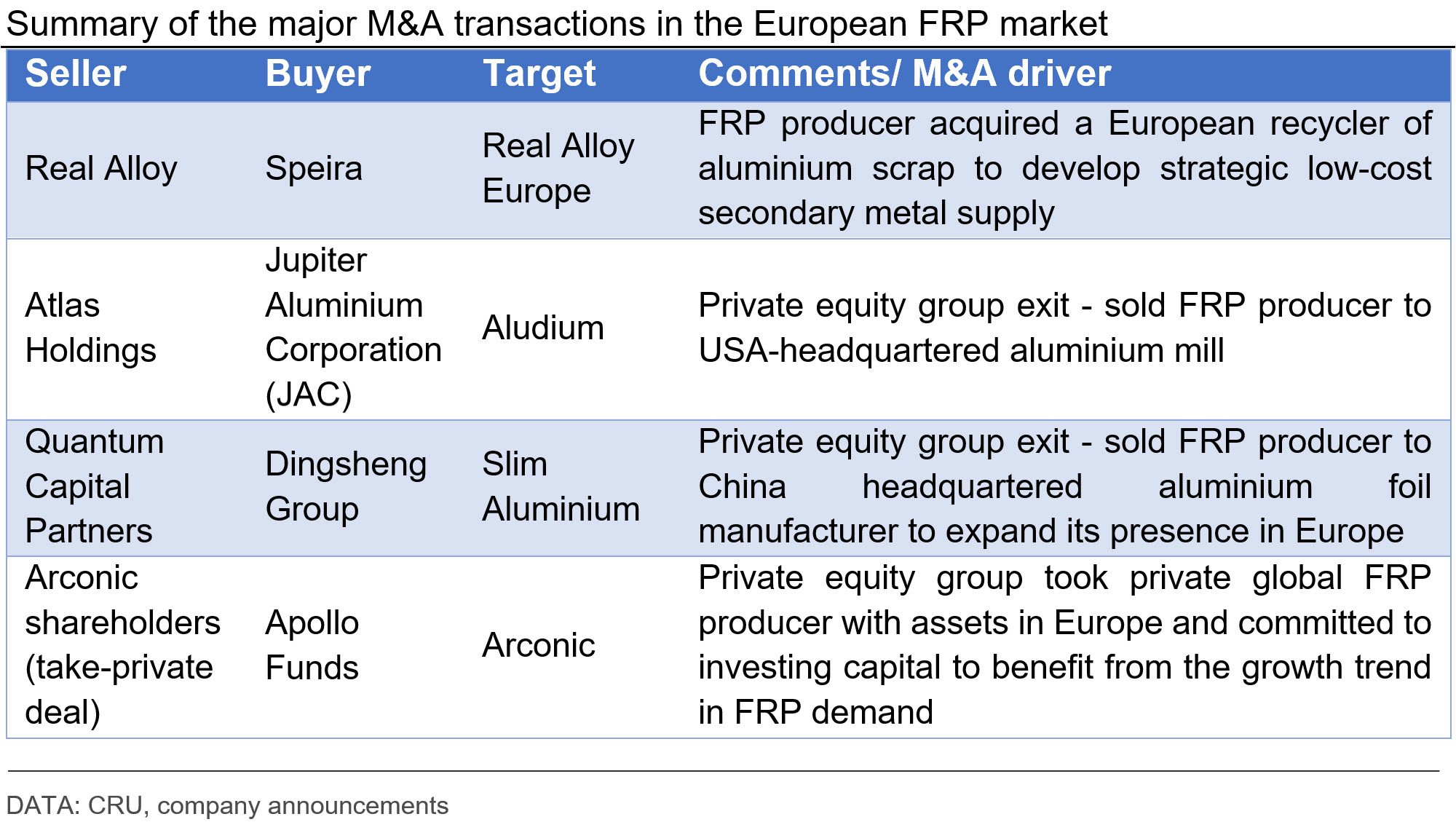
M&A activity in Europe did not lead to significant market consolidation
What can we learn from the M&A activity in Europe? Firstly, we believe that M&A developments are positive for the sector. Strategic M&A in a time of turmoil reflects the management’s longer-term positive view of the market. For example, Paul-Henri Chevalier, CEO of Jupiter Aluminium Corporation (JAC), stressed that "with this acquisition, Jupiter Aluminum is pursuing its objective to expand in Europe", while Apollo announced its commitment to “investing significant capital” in Arconic to “secure its competitive position and world-class product offering”.
Secondly, both Speira and JAC deals reflect the longer-term decarbonisation trend related to the increasing importance of recycling and scrap. Indeed, Speira announced: “We are combining a leading European aluminium recycling company with one of the largest aluminium rolling and recycling companies on the continent”, while JAC has been recycling aluminium for more than 30 years in the US and has completed the acquisition of the FRP producer in Europe.
Thirdly, we can see that three of the four M&A deals discussed involve private equity (PE) groups either exiting the rolling business or taking the FRP producer private. Both Atlas Holdings and Quantum Capital Partners are PEs selling to industrial players, JAC and Dingsheng Group, respectively. Moreover, JAC entered the European FRP market through acquisition.
Finally, we observe that M&A transactions completed in 2023 did not lead to significant European FRP market consolidation. Except for Dingsheng expanding its foil business in Europe, deals mostly represent changes in ownership with international industrial players entering the European FRP market, while the Speira-Real Alloy deal can be considered as vertical integration.
Is consolidation viable in the European FRP market?
As we discussed above, M&A activity in the European FRP market has not led to significant market consolidation within the European sector. However, considering the strategic interest in the sector we outlined, the valid question is whether European consolidation is theoretically feasible. This is a complicated subject with strategic, financial, and operational considerations, to name a few. However, firstly we need to understand if the structure of the FRP market in Europe allows for consolidation.
To answer this question, we analysed detailed production data by product from the CRU Aluminium Cost Model (ARC), which covers 25 operators and 38 mills based in Europe. The imported or exported FRP volumes are not accounted for in this analysis. The by-mill data was combined by the operator to come up with the consolidated production profile. We have also calculated the Herfindahl-Hirschman Index (HHI), which is used to determine market competitiveness pre- and post-M&A and applied it to measure market concentration for combined FRP market as well as by-products.
The high-level results are presented below. We estimate that the top ten FRP operators in Europe produce 82% of the total FRP market volume, while the top three operators control 55% of production. Additionally, among the top 10, there are six operators with shares between 3–4%. Hence, in such a market, a top 3 producer with 13% share can theoretically improve their position from third to second via the acquisition of any of the top 4–7 producers. In this case, its production share will improve roughly to 17% or 18%. Additionally, a consolidation of three operators with production shares between 3–6% can potentially create a top 3 player with a 14% market share, assuming a combination of 6%, 4%, and 3% shares.
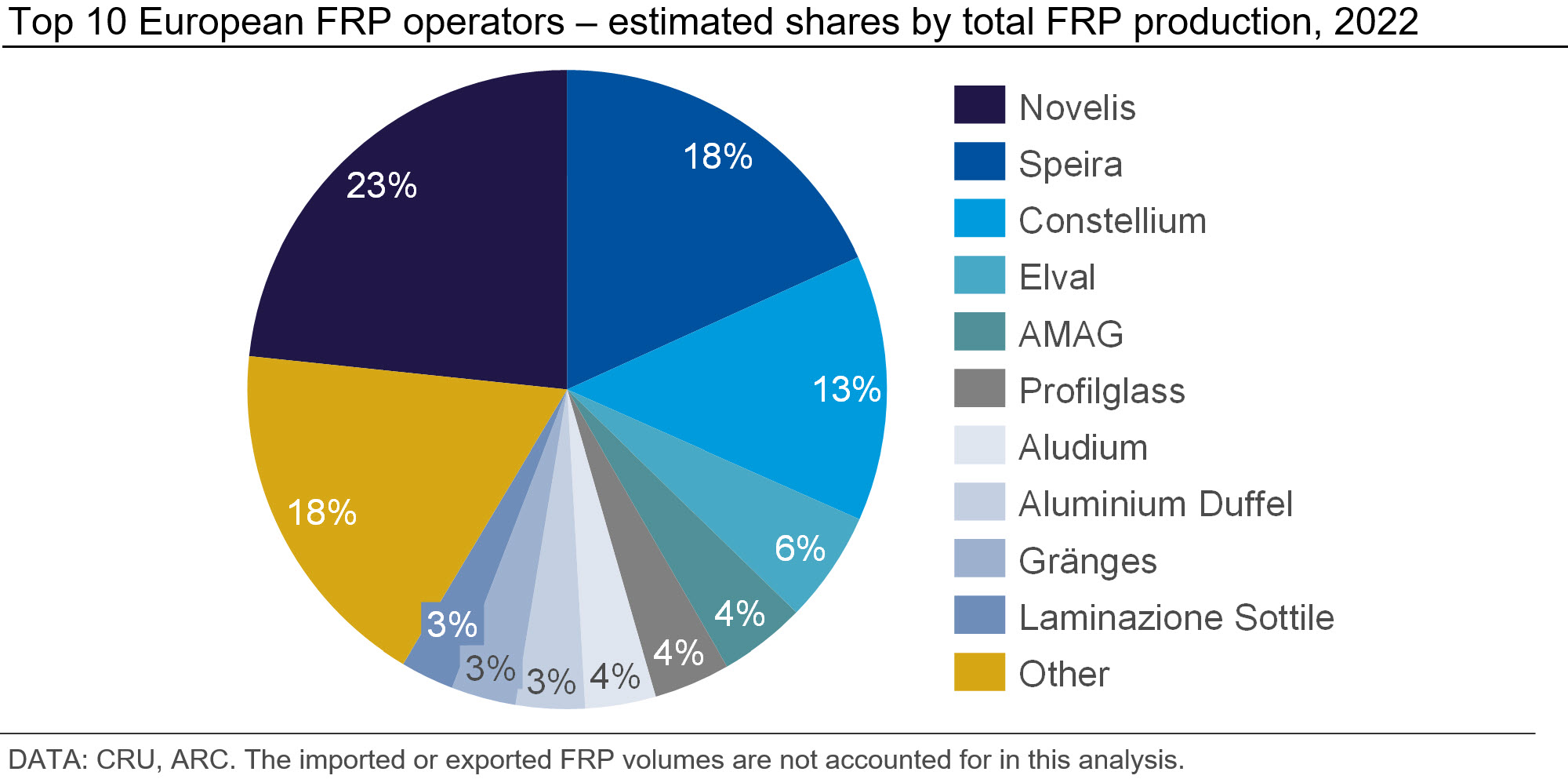
However, a more detailed segment analysis is required as FRP operators run complex diversified operations producing unique products, as a single operator can produce all products and have various production shares.
ARC covers 18 different flat rolled product types, which we combined into six key product groups – 1xxx, 3xxx, and 5xxx ‘common’ alloys, foil stock, plate, Auto Body Sheet (ABS), can stock, and others. For each group, we calculated an operator market share by production as well as the HHI.
As can be seen from the chart below, the combined FRP market can be considered competitive as HHI is below 1,500. The same conclusion can be made for foil stock, 1xxx, 3xxx, and 5xxx markets. However, both can stock and ABS market segments are highly concentrated, while the plate market is moderately concentrated as it sits in the middle with HHI between 1,500 and 2,500.

Therefore, a potential merger of two operators, both producing can stock and/ or ABS might not be viable as both markets are highly concentrated, and a combination might raise antitrust concerns. For instance, the can stock market is controlled by the top four FRP producers by volume, while 89% of the ABS market is covered by four producers, including three from the top four by total production. Hence, to come up with potential combinations on operator level, we need to study operators’ market shares by product in detail. The results are presented below.
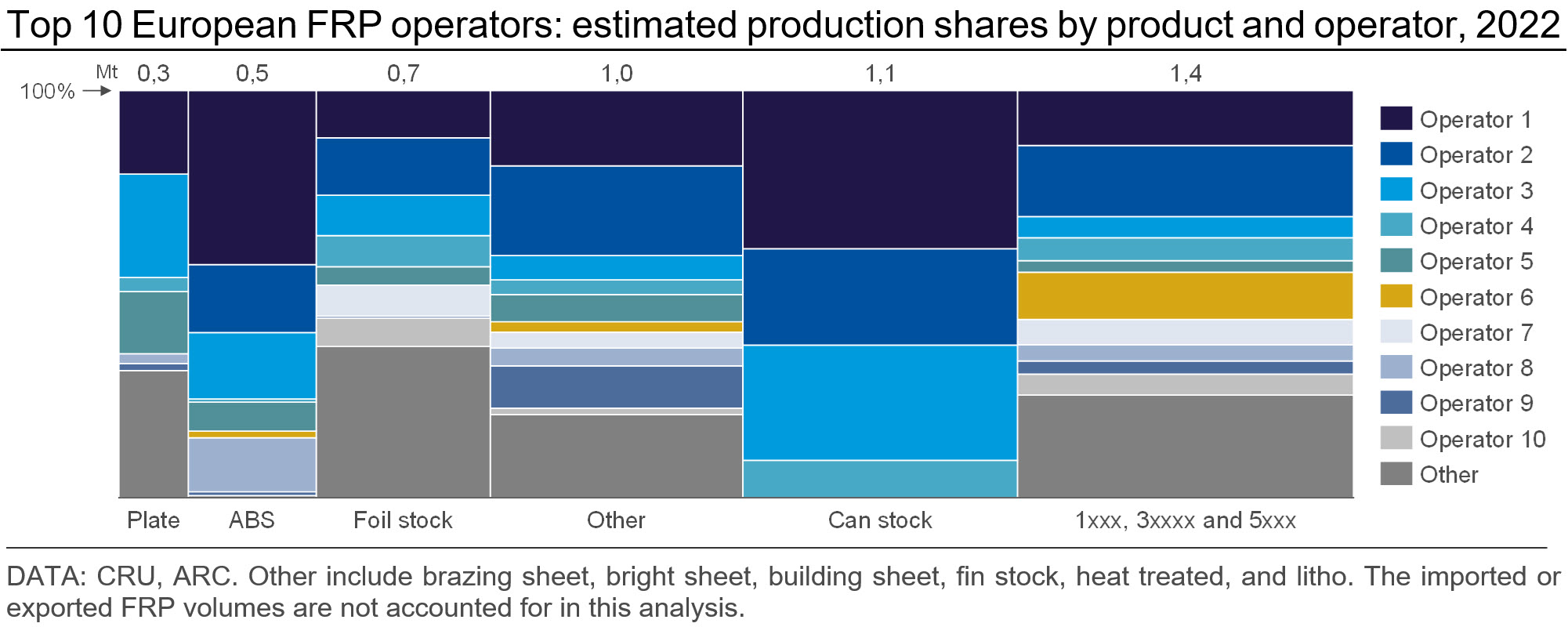
We believe that M&A combinations on an operator level are feasible, based on the segment market structure in Europe. For example, a top FRP producer exposed to highly concentrated can stock and/or ABS markets can still increase its total market share via an acquisition of the 1xxx, 3xxx, and 5xxx or foil stock producer. The reverse acquisition can also work as an FRP producer, with a strong market share in 1xxx, 3xxx, and 5xxx and/ or foil stock market, can potentially increase its total market share and enter a new segment via the acquisition of the plate or ABS operator.
Explore this topic with CRU
Author Alexey Pavlov
Senior Analyst, Aluminium View profile